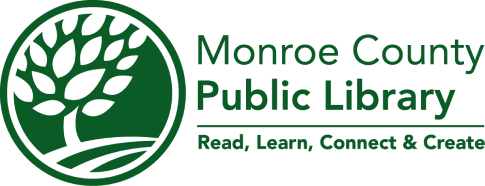This series offers reading selections from primary source documents including maps, charts, graphs, photographs, news stories, and more. Practice visual literacy and reading comprehension skills. (Beginning and Intermediate levels)

Published on Monroe County Public Library, Indiana - mcpl.info (https://mcpl.info)
Reading Comprehension
Hi-Lo Book Comprehension Strategies Guide was created as a resource for classroom teachers in grades 3–12 who work with struggling and developing readers. The 30 included strategies can be used with any Hi-Lo Book and are organized according to the critical phases of reading (before, during, and after) to maximize comprehension. Each strategy has a visual example and a step-by-step lesson plan. Educators can easily incorporate these strategies into their curriculum to help their students become better readers.
Expand students' reading comprehension skills with this collection of 35 high-interest informational texts that are sure to keep them engrossed. The easy-to-read passages are organized into ten chapters that focus on specific core reading standards and skills, including main idea, key details, text features, making connections, comparing texts, and more. Comprehension questions follow each passage. Includes a summative practice test as well as an answer key with rationales. Grade 4 and Grade 5 also available.
Learn about your personal reading attitudes and patterns and about pre-reading skills using reading organizers, decoding, and different kinds of reading. Gain practice with strategies for improving comprehension, including unit quizzes (with answers).
In this five-level series, each lesson presents two passages from literature, social studies, and science. Comprehension questions require readers to read closely and compare and contrast varied fiction and nonfiction writings. (Beginning to Intermediate levels)
Yes, we can have our cake and eat it, too! We can improve students' reading and writing performance without sacrificing authenticity. In Read, Talk, Write, Laura Robb shows us how. First, she makes sure students know the basics of six types of talk. Next, she shares 35 lessons that support rich conversation. Finally, she includes new pieces by Seymour Simon, Kathleen Krull, and others so you have texts to use right away. In Read, Talk, Write it's a process your students not only can do, but one they will learn to love.
The reproducible lessons in this series were designed for students who still have trouble understanding what they read, writing a simple report, or finding the appropriate words to express themselves. A systematic, incremental teaching method promotes progress by steadily building confidence in six core topics. These reproducible books include teacher notes and tips, answer keys, reference guides, lessons, unit reviews, and more.
This six-book series introduces concepts of literary analysis and reading comprehension for fiction, nonfiction, and practical reading texts. Includes vocabulary, grammar, and language usage activities. Book and CD. (Intermediate level)
Provides relatable, student-centered content combined with essential academic skill instruction. As students interact with the engaging content, they not only master English, but also navigate their place in the world. Reflect builds students' confidence and helps them achieve their academic, professional, and personal goals. A clear framework of academic and critical thinking skills prepares students for future reading and writing success. Find online resources related to the series.
Apply graphic organizers and activities to explore literary elements, make inferences and predictions, and detail the novel’s events. Series includes two levels. (Intermediate level)
Explore high-interest fiction and nonfiction stories with comprehension and critical thinking skills activities. The history and literature series reinforces reading skills and strategies. Teacher's guides include lesson plans and answer keys. (Advanced level)
This five-level series with individual titles provides instruction for understanding and identifying:
- The main idea
- Details
- Comparing and contrasting
- Cause and effect
- Fact and opinion
- Drawing conclusions
- Sequencing and making inferences
- Using phonics and word study.
Teacher's Manual and Assessment Book (Intermediate to Advanced levels) supplies teaching techniques, answer keys, reproducible worksheets, placement charts and primary, and knowledge tests.
This series provides short reading selections in literature, social studies, and science that includes tips for improving reading speed and comprehension. An answer key is included. (Advanced level)
Explore activities to locate and integrate information from a variety of sources, practice drawing conclusions, and use higher-order thinking skills. This series has multiple levels. (Intermediate level)
